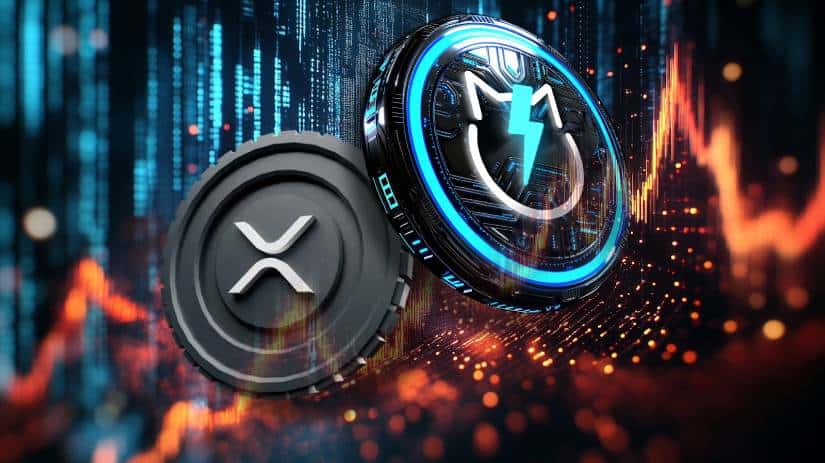XRP Lawsuit Update: Ripple and SEC Seek Modified Judgment Amid Exceptional Circumstances
In a significant development, Ripple Labs and the U.S. Securities and Exchange Commission (SEC) have jointly refiled a motion requesting an indicative ruling to modify Judge Analisa Torres' August 2024 final judgment. The original ruling, which imposed a $125 million fine on Ripple and a permanent injunction against its institutional sales of XRP, is now under scrutiny as both parties argue that exceptional circumstances warrant relief under Rule 60(b)(6). This move highlights the ongoing legal complexities surrounding XRP and could have far-reaching implications for its future in the cryptocurrency market. As of June 2025, the outcome of this motion remains a critical focal point for investors and industry observers alike.
Ripple and SEC Refile Motion to Resolve Lawsuit, Highlighting Exceptional Circirumstances
The U.S. Securities and Exchange Commission and Ripple Labs have jointly refiled a motion seeking an indicative ruling to modify Judge Analisa Torres' August 2024 final judgment. The original ruling imposed a $125 million fine on Ripple and a permanent injunction against its institutional sales of XRP.
Both parties now argue under Rule 60(b)(6) that exceptional circumstances warrant relief from the judgment. Their refiled motion cites a settlement agreement reached earlier this year, proposing to dismiss the injunction and release the escrowed funds—$50 million to the SEC and the remainder back to Ripple.
Judge Torres had denied the initial motion in May, finding the parties failed to demonstrate the requisite 'exceptional circumstances' under Rule 62.1. The refiling represents a strategic pivot in Ripple's prolonged legal battle with regulators.
Ripple and SEC Seek to Lift XRP Sales Injunction Through Rule 60(b) Motion
Ripple Labs and the U.S. Securities and Exchange Commission have returned to Judge Analisa Torres' courtroom, this time seeking relief under Rule 60(b) of the Federal Rules of Civil Procedure. The motion could potentially dissolve last year's injunction that restricted Ripple's XRP sales to institutional investors.
The proposed settlement WOULD see Ripple pay $50 million to the SEC while recovering the remaining $75 million from the original $125 million penalty held in escrow. Judge Torres must first issue an indicative ruling before the Second Circuit can remand the case for final resolution.
Market participants are closely watching the proceedings, as removal of the sales restrictions could significantly impact XRP's liquidity and trading volume across major exchanges. The outcome may set important precedents for how cryptocurrencies are classified and regulated in the United States.
XRP Price Plummets Amid Massive Selloff, Creating Potential Buying Opportunity
XRP's price tumbled to $2.11 after breaching the $2.30 support level, triggering a wave of liquidations that saw $7.6 million in long positions wiped out. The selloff created a 182% imbalance between long and short liquidations, reflecting traders' misplaced Optimism about an upward breakout.
Despite the sharp decline, technical indicators suggest the cryptocurrency is now oversold. The $2.08-$2.10 support zone remains intact, offering a potential floor for prices. Trading volume dipped 4.71% to $2.8 billion as the market digested the move.
Market participants had anticipated a rally toward $2.40-$2.50, but instead witnessed a breakdown of the rising trendline on 4-hour charts. The current price action tests a critical demand zone that aligns with long-term trendline support, presenting what some traders see as a contrarian opportunity.
Ripple and SEC Near Settlement in Landmark XRP Lawsuit
Ripple's protracted legal battle with the U.S. Securities and Exchange Commission may culminate in a $125 million settlement, pending approval from Judge Analisa Torres. The proposed resolution would see $50 million allocated to the SEC and $75 million returned to Ripple from escrowed funds.
Prominent attorney Bill Morgan anticipates judicial approval despite criticizing the motion's drafting. "This could be the linchpin that finally resolves the appeals standoff," Morgan observed, noting that rejection would prolong litigation indefinitely.
The settlement framework, filed jointly on June 12, represents a strategic compromise after years of contentious proceedings. Approval would remove the cloud of regulatory uncertainty that has shadowed XRP since December 2020.
Ripple and SEC Seek to Conclude Legal Battle with $125M Settlement
Ripple and the U.S. Securities and Exchange Commission have filed a joint motion to dissolve the injunction in their long-running legal dispute. The proposal seeks to release $125 million held in escrow, with $50 million allocated to the SEC and $75 million returned to Ripple.
The motion, citing "exceptional circumstances" under Federal Rules 60(b)(6) and 62.1, highlights shifting regulatory attitudes and a mutual desire to avoid further litigation. This MOVE aims to resolve pending appeals in the Second Circuit and prevent another year of legal proceedings.
Originally filed in 2020, the case accused Ripple of conducting $1.3 billion in unregistered XRP sales. A final settlement would eliminate remaining legal uncertainties, potentially bolstering the XRP token's market position.
Ripple’s Strategic XRP Escrow Management Defies Market Expectations
Ripple’s monthly release of 1 billion XRP from escrow—a process often misconstrued as a market dump—is instead a calculated liquidity strategy. crypto analyst Vincent Van Code highlights that over 80% of the unlocked tokens are immediately cycled back into time-locked escrow accounts, governed by the XRP Ledger’s protocol rather than Ripple itself.
The remaining 10-20% fuels operational costs and the On-Demand Liquidity (ODL) platform, which facilitates cross-border transactions for financial institutions. This systematic approach mitigates supply shocks while reinforcing XRP’s utility in payments infrastructure.
XRP’s price resilience amid these releases underscores Ripple’s disciplined supply management. The ODL platform’s growth, powered by strategic XRP allocation, continues to anchor institutional adoption narratives.

